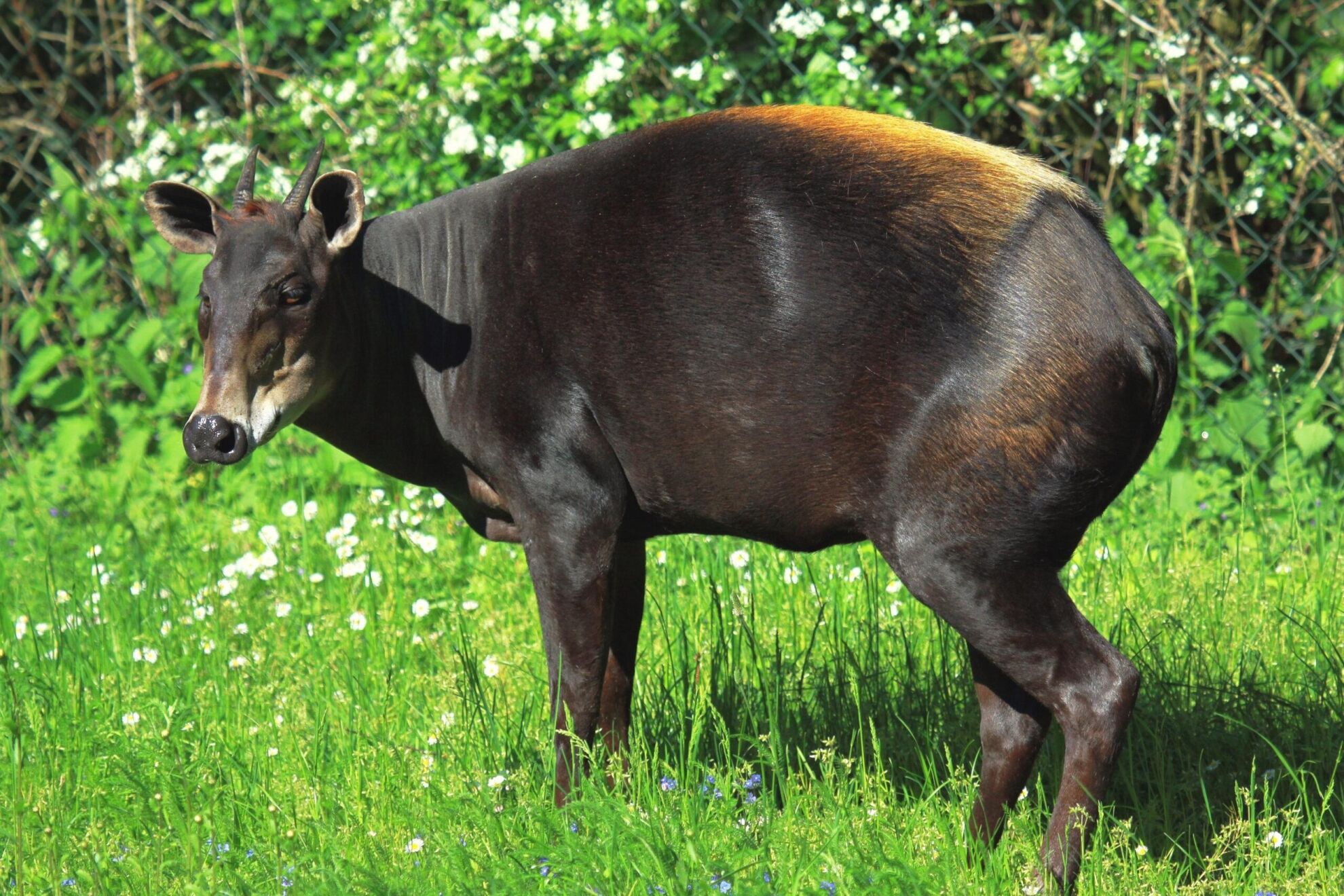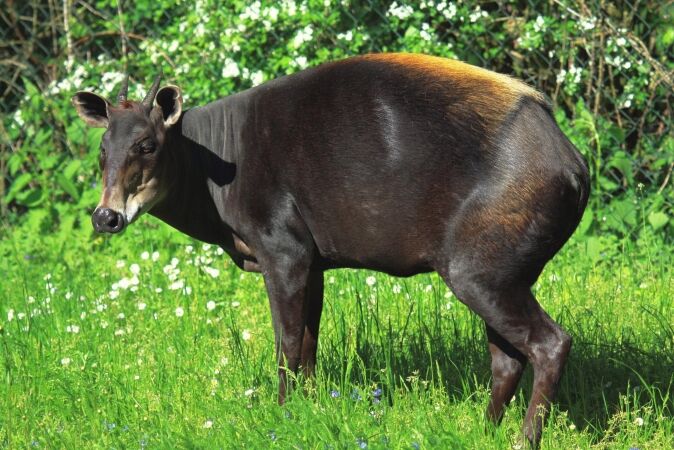

The yellow-backed duiker (Cephalophus silvicultor) is a shy, forest-dwelling antelope found in the forest blocks of West and Central Africa regions. The largest of the duiker family, and weighing around 130 lb, the yellow-backed duiker prefers a habitat of dense cover such as semi-deciduous forests, rain forests, riparian forests, and montane forests. They are also found in open bush, isolated forest islands, and clearings along the savanna. Yellow-backed duiker are available to harvest on game hunting safaris in the Central African Republic, Congo-Brazzaville and Zambia. Their IUCN status is “least concern” although their numbers are diminishing.
They are active during the day, taking refuge under trees, between large buttress roots or in dense vegetation during the hotter midday. Yellow-backed duikers are omnivores eating a varied diet of fruit, roots, flowers, fungi, insects, and carrion. They breed throughout the year, with a gestation period of 4-7 months. The doe gives birth to 1-2 calves which are hidden for the first week or so of their lives. The male plays a role in rearing the young and will actively protect them until they are old enough to fend for themselves.
The yellow-backed duiker is named after the characteristic triangular patch of yellow fur that is found on its rump. This patch of fur stands upright when the animal is alarmed or feels threatened. The word “duiker” is from the Dutch word “diver” as when disturbed or threatened it dives into the underbrush and disappears.
Name:
Cephalophus Silvicultor
Weight:
130 pounds
Shoulder Height:
30 inches
Range:
Central and West Africa
Breeding:
Throughout the year
Life span:
10-12 years
The Yellow Backed Duiker is Found in Forest Blocks in West and Central Africa.
When on African hunts targeting the yellow-backed duiker, look for an antelope with a stout, barrel-shaped body shape that stands taller at the rump than the shoulders of the animal. Their coat is a dark brownish-black, with a slightly oily texture to it, while the tail is thin with a patch of dark fur at its tip. It has a triangular-shaped patch of yellow fur on its back. Its forehead is dark, while the muzzle, cheeks, and lower section of the face are pale grayish-brown. Both sexes have horns, ranging in size from 3.3-8.3 inches in length, with the male’s horns being slightly longer. The horns are smooth and slender, cylindrical and ribbed at the base. Humans are not the only ones targeting the yellow-backed duiker when hunting in Africa. Lions and leopards are top of the list for hunting the yellow-backed duiker, as well as civets, snakes, other members of the cat family and large birds of prey.
Stalking and tracking are the two main methods on a game hunting safari. Stalking the trail of the animal or tracking its spoor will lead to a very short opportunity, once the animal is in sight, to take the perfect shot. As with most members of the duiker family, the yellow-backed duiker is extremely alert and will disappear at the slightest sign of danger.
The biggest challenge with hunting duikers is that you only catch a fleeting glimpse of them and it is therefore quite difficult to estimate the size of the horn. The reward is estimating correctly and bagging a prize small antelope to add to your collection!
Yellow-backed duiker are small and dainty antelope whose hides can easily be ruined by high caliber rifles. Calibers such as .22, .223, .243 Win and .260 Remington are recommended. A 30.06 Springfield or a .308 with a solid bullet can be used. The .375 H & H loaded with solids is perhaps the best caliber for yellow-backed duiker hunting in Africa.
Search from our range of Hunts across various popular destinations in Africa.
Find A Hunt